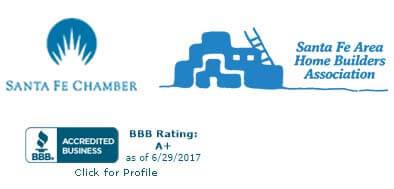Steps To Follow For Annual Boiler Maintenance And Shutdown
Specialists know how essential it is to keep boiler systems up to date-and running as efficiently as possible. Knowing how to shut down a boiler properly is essential because damaged boilers can result from an improper shutdown.
When the boiler furnace is drained hot, the remaining heat might induce a warpage of tubes or tube sheets, leading to leaks and necessitating tube rolling. The use of cold water for cooling can cause warping, tension, and leaks.
Getting ready for the shutdown.
- Reduce the load and switch the fire rate to the low setting to start the boiler’s shutdown operation. Then, blow out the boiler, the columns, and level controls to avoid frequent boiler repair in Santa Fe, NM.
- Before cooling and draining the unit, clear any sediment or sludge accumulated at the bottom of the boiler or the boiler bridles.
- Next, consider testing your level safety devices with a slow drain to avoid frequent boiler repairs in Santa Fe, NM. Ensure that your vital level safety mechanisms will function when required, as you plan to shut down and drain the boiler anyhow!
- This test closely mimics a boiler low water scenario by gradually lowering the water level until the low water safety cuts off fuel.
- Use manual shutoff valves to isolate the boiler after the burner has tripped and the commercial boiler has ceased producing steam. You might want to separate feedwater during wet layup to protect the feedwater control valve and postpone boiler replacement in Santa Fe, NM.
- Follow all procedures to disconnect the boiler from all energy sources if your facility has numerous boilers connected to the same system and you need to access the vessel for inspection.
- Plan to lock and isolate the following components: main fuel, steam, continuous blowdown, pilot fuel, feedwater, surface blowdown, chemical feed, and electrical power to blowers, ignitors, and any other potentially dangerous energy source.
- Never risk your life by relying on a check valve to stop backflow. A double block and bleed configuration or a blind flange in the system are ideal options for life safety hazards.
- By turning on the combustion air blower, resist the impulse to cool the boiler quickly to avoid frequent boiler repairs in Santa Fe, NM. The boiler should be isolated and allowed to cool slowly on its own.
- Pushing it while cooling could cost you a lot of money! Make sure the temperature drops don’t go below the manufacturer’s suggested rate at any given time.
- The unit is prepared to be filled or completely drained once it has cooled to below 200 degrees. However, if you shut it down in the winter, it should be done as soon as the system has cooled to avoid freezing or corrosion and to postpone boiler replacement in Santa Fe, NM.
- After the boiler has been drained, make sure to give it a close inspection. As your boiler insurance provider advises, test, recertify, or replace your safety valves.
- Request a scale, corrosion, or oxygen pitting inspection from your water treatment company. The only area where you can be positive that your water treatment program protects your boiler as it should is inside the boiler itself.
- Get your boiler ready to run after the shutdown, outage, or summer by replacing soft parts before calling it a day. Sight glass packing, manway, handhole gaskets, and other delicate pieces are not meant to last forever.
Bottom line
The boiler specialists at SALAZAR Heating, Cooling & Plumbing, LLC are delighted to help you plan, shut down, maintain, and startup, whether you’re trying to patch a leak or carry out your yearly boiler tune-up.
Allow the professionals to assist you in extending your business boiler’s lifespan so your organization may save money. Call us at 505-820-2007 or drop us an email for a boiler replacement in Santa Fe, NM.



